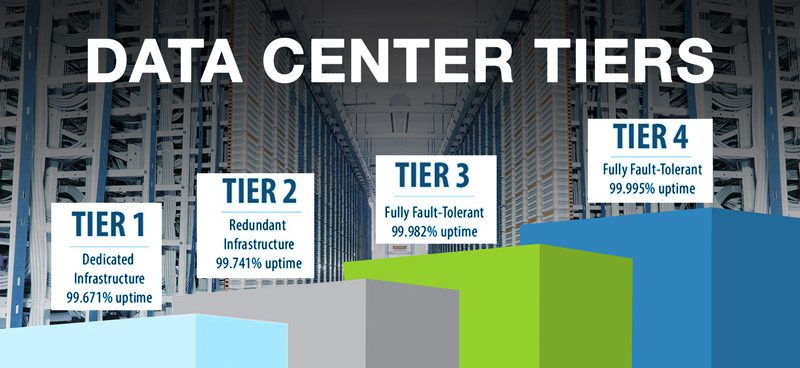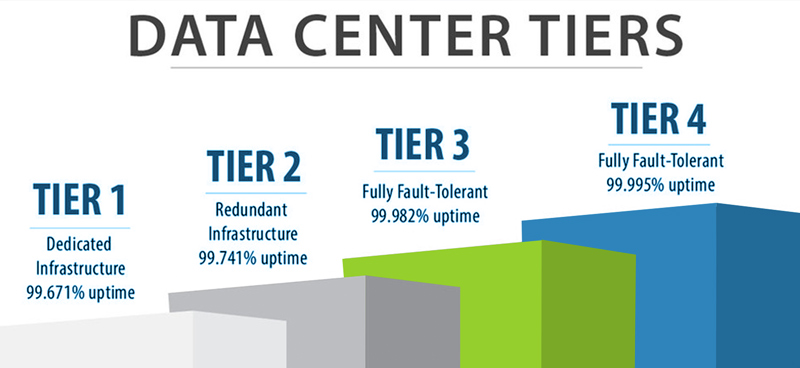Data centers are the very center of today’s digital world in the case of Data Center Tiers, powering everything from online banking to streaming services and social media to government infrastructure. However, not all data centers are created equal. They vary significantly in their infrastructure, performance, and reliability.
To address these differences, the Uptime Institute (a globally recognized organization that sets standards for data center performance and reliability) developed a tier classification system, which helps businesses evaluate data center performance for Data Center Tiers based on their specific needs for uptime and redundancy.
Understanding these classifications is essential for ensuring uninterrupted operations, securing critical data, and optimizing system performance. For small businesses or global enterprises, selecting the right data center tier in Dana Cloud is vital in maintaining uptime, reducing risks, and supporting long-term growth in an increasingly digital economy.
Related article: What Is a Micro Data Center?
Certainly, here’s a table summarizing Data Center Tiers:
| Tier | Description | Redundancy | Uptime | Suitability |
|---|---|---|---|---|
| Tier I | Basic infrastructure, single path for power and cooling. | Minimal | Low (frequent downtime) | Small businesses, non-critical operations with limited IT needs. |
| Tier II | Some redundancy with backup power and cooling components. | Moderate | Moderate (occasional downtime) | Medium-sized businesses with some critical applications, but can tolerate occasional interruptions. |
| Tier III | Dual power and cooling paths, high availability. | High | 99.982% | Businesses with critical data needs, such as financial institutions, e-commerce platforms, and healthcare organizations. |
| Tier IV | Fully redundant infrastructure, maximum fault tolerance. | Very High | 99.995% | Organizations requiring absolute reliability, such as global enterprises, financial institutions, and cloud service providers. |
Data center tiers: Definition explained
The term “tier” refers to a level or rank in a hierarchical system. In the context of data centers, tiers classify facilities based on their infrastructure, reliability, and ability to maintain uptime. Created by the Uptime Institute, the tier system ranges from Tier I (basic infrastructure) to Tier IV (fault-tolerant), with each level offering a different degree of redundancy and availability. We’ll discuss the main levels later in this article.
These classifications help organizations evaluate data centers according to their operational needs, such as how much downtime is acceptable and what level of resilience is required. Higher tiers provide greater protection against failures, ensuring continuous service even during maintenance or unexpected disruptions. By understanding data center tiers, businesses can make informed decisions, choosing facilities that align with their performance expectations and risk tolerance.
Read more: What is Hyperscale data center?
Data center tiers: Classification standards
Data center tier classification standards are industry benchmarks that define the capabilities and resilience of a data center. These standards evaluate a facility’s ability to provide continuous service, taking into account its infrastructure design, redundancy systems, and fault management processes.
The classification system ensures transparency, helping businesses understand what level of reliability and performance a data center types can offer. These standards are critical in determining how well a data center can handle unexpected events while maintaining operational efficiency. By relying on these benchmarks, organizations can choose facilities that align with their specific uptime and reliability requirements.
What Are the Data Center Tier Ratings?
Data center tier ratings are a standardized way to measure a facility’s reliability and performance. They range from Tier I (basic) to Tier IV (fault-tolerant), indicating the level of redundancy and uptime a data center can provide. Let’s read about them:
What Is a Tier 1 Data Center?
A Tier 1 center is the most basic classification, offering single-path power and cooling with no redundancy. It provides minimal protection against downtime, meaning any equipment failure can result in service interruptions. Typically suitable for small businesses or non-critical operations, Tier 1 data centers have limited fault tolerance and cannot guarantee high levels of availability.
What Is a Tier 2 Data Center?
At a higher level of reliability, a Tier 2 data center offers improvements above Tier 1, with some redundancy. It features a single power and cooling path but includes backup components such as uninterruptible power supplies (UPS) and generators. While it provides greater protection against downtime, it still lacks full fault tolerance, making it suitable for businesses that need moderate availability but can tolerate occasional interruptions.
What Is a Tier 3 Data Center?
A Tier 3 data center offers significant improvements over Tier 1 and Tier 2, providing dual power and cooling paths for redundancy. It ensures continuous operation even during maintenance or equipment failures. Unlike Tier 1 and Tier 2, Tier 3 data centers are designed for high availability, with 99.982% uptime, making them suitable for businesses with critical data needs.
Read more: What is a Colocation Data Center? Types & Benefits
What Is a Tier 4 Data Center?
A Tier 4 data center is the highest classification, designed for maximum reliability and fault tolerance. It features fully redundant power, cooling, and network systems, ensuring continuous operation even during multiple simultaneous failures. With 99.995% uptime, Tier 4 data centers are ideal for businesses requiring the highest levels of availability, such as financial institutions and large-scale enterprises.
Data Center Tiers: Which Is Right for You?
Choosing the right data center tier depends on your business’s specific needs, such as the criticality of your operations, budget, and required uptime. Here’s how different tiers align with various business types and some examples to help you better understand their differences:
- Tier 1 – Basic Needs, Low Cost: A Tier 1 data center is suitable for small businesses or startups with limited IT infrastructure needs and tolerance for occasional downtime. These businesses may not rely on continuous service or need high levels of redundancy. Examples could include small local retail businesses or personal websites where data security and uptime are not mission-critical.
- Tier 2 – Moderate Availability: A Tier 2 data center provides more redundancy and is a good choice for medium-sized businesses with some critical applications but not requiring round-the-clock uptime. Examples include regional banks or mid-sized e-commerce businesses that need to avoid extended service interruptions but can tolerate occasional downtime during maintenance.
- Tier 3 – High Availability: For businesses with more demanding operations, such as financial services, e-commerce platforms, or healthcare organizations, a Tier 3 data center provides dual power and cooling paths, ensuring continuous operation even during maintenance. A company like Netflix or a regional airline might rely on Tier 3 to ensure high availability and reliability for user services.
- Tier 4 – Maximum Reliability: Tier 4 data centers are designed for organizations that require absolute reliability with zero tolerance for downtime. These include global enterprises, financial institutions, and cloud service providers like Amazon Web Services (AWS) or Google, where any downtime can result in significant revenue loss or service disruption.
FAQ
How do data center tiers affect cost?
Higher-tier data centers come with more robust infrastructure, redundancy, and uptime guarantees, which result in higher costs. Businesses must balance their need for reliability with budget constraints, selecting a tier that meets operational requirements without unnecessary expenses.
Can a data center upgrade its tier?
Yes, a data center can upgrade its tier by enhancing its infrastructure, adding redundancy, and improving cooling and power systems. However, this process requires significant investment and planning to meet the higher standards set by the Uptime Institute for certification.
What is the downtime impact for each tier?
Tier 1 has the highest risk of downtime due to minimal redundancy, while Tier 2 offers moderate protection. Tier 3 ensures limited downtime with dual paths, and Tier 4 guarantees nearly zero downtime, making it ideal for critical, 24/7 operations like financial institutions and large enterprises.



